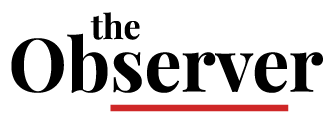CONTRIBUTED BY
CAITLYN GRIFFIN
AUBURN— Larry Green was diagnosed in May 2024 with rapid onset dropped head syndrome, a rare condition characterized by severe weakness in the neck extensor muscles.
By October, he could no longer hold his head up unless he was in a recliner. His daughter, Jessica Bowers — career development content and strategy manager for the Office of Career Development and Corporate Relations — turned to the Auburn Family for help.
Knowing it was no small request, she reached out to Michael Zabala, Auburn Alumni Engineering Council Associate Professor, and Jordan Roberts, senior lecturer in mechanical engineering, to explore creating a custom biomechanical device to improve her father’s quality of life.
Zabala and Roberts decided to make it a learning experience for undergraduates.
Seven students — six in engineering and one in exercise science — answered the call, including Sarah Grace Bates, Haley Duncan, Margelle Kyle, Seth Peebles, Ben Timm, Yunli Zhang and Reid Hess.
Bowers said her father struggled to find a brace that met his needs through prosthetics appointments.
“The prosthetists worked hard with the resources they had, but he spent hours in appointments for months with little progress and limited customization for his condition,” Bowers said. “They eventually made a brace that worked somewhat, but I had already started exploring other solutions at Auburn.”
It Just Means More
With no college credit or compensation, the students said the “why” behind the project meant even more.
“We wanted to do good work regardless of being graded or receiving credit,” Duncan said. “To me, engineering has never been math and science — it’s about helping to improve society.”
Timm saw it as a chance to build something for someone with no other options.
“That’s why I want to work in biomechanics and create solutions for people who need them but don’t have anything available,” he said.
The students were told about Green’s sensitivity to pressure and set out to create an one-of-a-kind brace.
By December, the initial design was complete, despite the challenge of having no direct access to Green. The team gathered key data throughout the process with support from Zabala’s Auburn University Biomechanical Engineering Lab.
“They presented their progress in my lab meetings and worked tirelessly over the break, building multiple versions,” Zabala said. “They worked with Iván Nail-Ulloa, a postdoctoral fellow specializing in wearable sensors for motion capture. He helped them collect data and provide objective analysis.”
Putting it to the Test
On Valentine’s Day, Green traveled from North Carolina to test the second prototype — the first in-person test.
“It was a moving experience being there,” Zabala said. “He has limited mobility, but the students sat him down and went over everything in detail: ‘Here’s what we’re going to do. If this is a problem, let us know.’ They were so prepared, and then to see them carefully and thoughtfully fit him with this brace — it was incredible.”
Although the brace wasn’t as successful as they had hoped, the students remain optimistic and proud of their accomplishments as they continue refining the design.
“I did feel like I had failed a little, but that’s OK because it’s part of the research process,” Timm said. “Research isn’t about getting it right on the first, second or even fifth try. It’s about having an idea that might work and refining it until it does.”
In the days before the meeting, the students created a checklist of procedures and practiced with each other — roleplaying as Green to ensure good bedside manner.
“They sent an advance questionnaire outlining what they were checking for, which they scripted for themselves. It was very professional — they treated him like a patient,” Bowers said. “I was impressed with how seriously they took it and how carefully they considered the user’s needs. As a contributor to the SGCOE Engineer Together initiative, it was moving for me to see students actively practicing a human-centered design approach, seeking to understand and meet the user’s unique needs while also relying on the distinct strengths of each team member.”
The Best of Auburn Students
Zabala commended the students for their dedication throughout the project.
“They truly represent the best of Auburn University students,” Zabala said. “Despite their busy schedules, they came together out of pure kindness to work on this project, dedicating an incredible amount of time and effort. It was refreshing to see these students work without compensation, driven solely by the need of a fellow Auburn Family member. Their decision to step up and help is remarkable.”
When Bowers came to Auburn in 2018, she kept hearing about the “Auburn Family.” At first, it sounded more like a marketing pitch than something real, she said. Now, she knows it’s genuine — and she’s thankful for the students and individuals who stepped in to help.
“In so many ways, this story is distinctively Auburn,” Bowers said. “The value of the Auburn Family culture is one that authenticates my experience as a welcomed, valued and respected staff member.”

